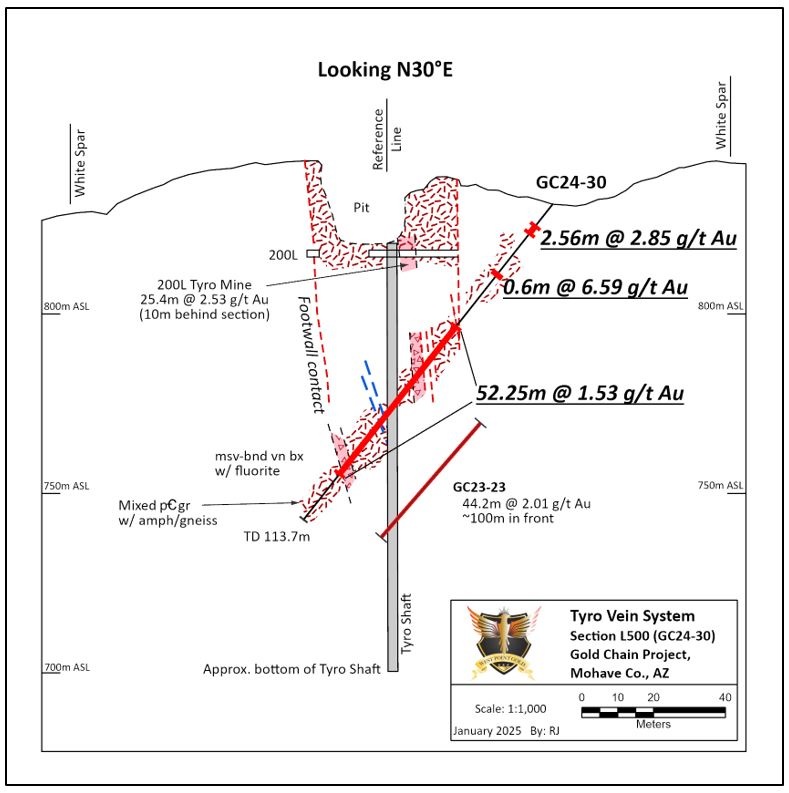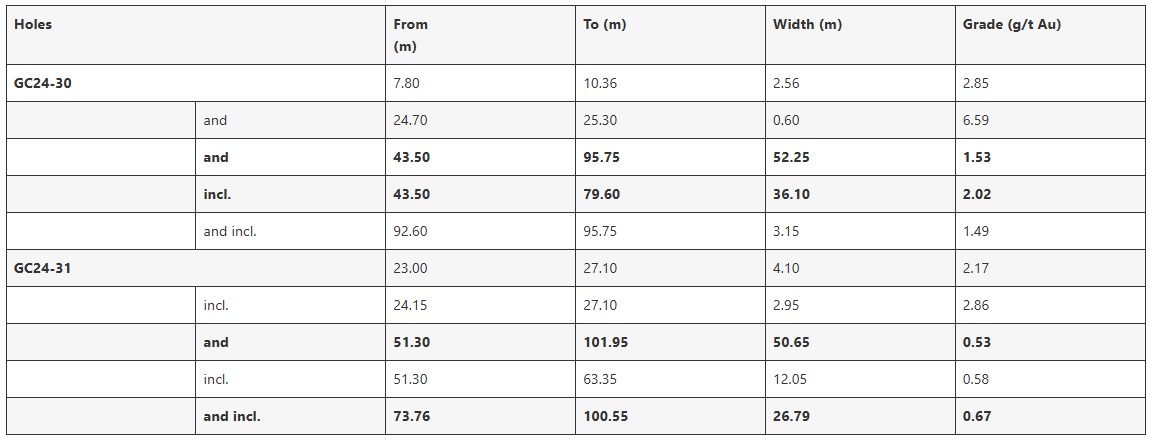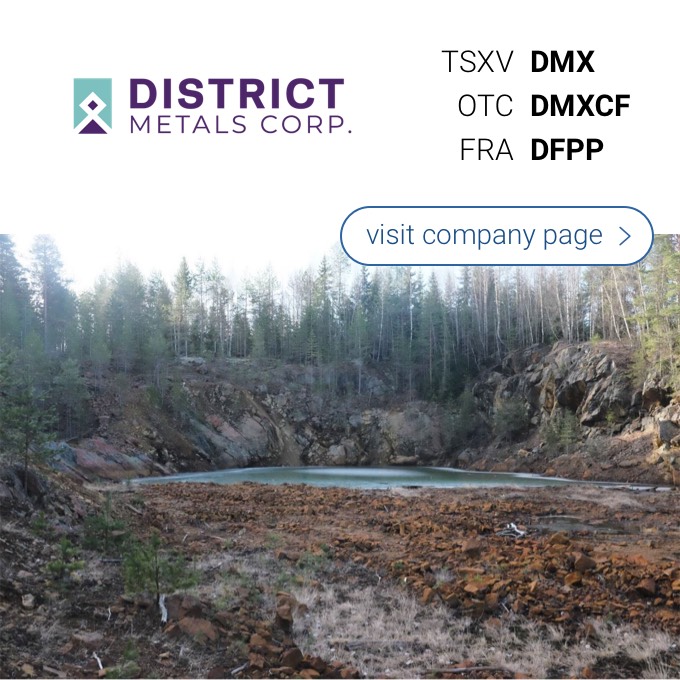
West Point Gold (WPG.V) has released the assay results from the first two holes that were drilled as part of its seven hole, 1,264 meter core drill program that was completed in the fourth quarter of last year.
Hole GC24-30 encountered 52.25 meters of 1.53 g/t gold starting just 43.5 meters downhole, and this interval included a higher grade zone of 36.1 meters of 2.02 g/t gold. The second hole the company reported on was hole 31 which encountered 50.65 meters of 0.53 g/t gold, starting at a down-hole depth of just 51.3 meters. While hole two clearly is weaker than the first hole, 0.53 g/t should be above the traditional cutoff grade of oxide-hosted gold mineralization in that part of the world (note: the company doesn’t have a resource yet, so there is no official cutoff grade for the Gold Chain project, but similar oxide projects in Nevada and Arizona have substantially lower cutoff grades with the nearby Moss mine applying a cutoff grade of 0.21 g/t for its resource calculation.

The company also mentioned that both holes intersected additional mineralized zones in the hanging wall of the deposit with intervals like 2.56 meters of 2.85 g/t gold and 4.1 meters of 2.17 g/t gold closer to surface. While these intervals are narrower, the grades are higher while the location of the additional mineralization could expand the width of the mineralized zone. That could have a positive impact on the strip ratio. The company started an infill sampling program of the holes to see if there is additional mineralization that may have been missed.
The company still has to publish the assay results of five additional holes and we expect to see the assay results shortly. The company reconfirmed its exploration target of 15.6-31.2 million tonnes at an average grade of 1.5-2.5 g/t gold implying a target of 750,000-2.5 million ounces of gold.
Disclosure: The author has a long position in West Point Gold. West Point will become a sponsor of the website. Please read the disclaimer.
